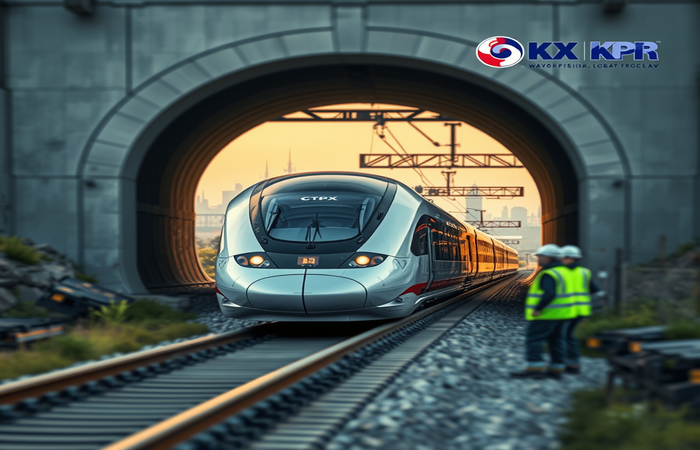São Paulo’s $2.7B High-Speed Rail: Eixo Norte Project

Introduction
This article delves into the significant Intercity Eixo Norte rail project in São Paulo, Brazil, a $2.7 billion undertaking representing a substantial investment in the state’s transportation infrastructure. The project, spearheaded by Governor Tarcísio Gomes de Freitas under the “SP Nos Trilhos” initiative, encompasses the construction and operation of three distinct rail lines, dramatically improving connectivity between São Paulo and Campinas, two major cities in the state. This ambitious endeavor involves a complex interplay of engineering, financing, and operational considerations, demanding a detailed examination of its various aspects. The successful implementation of this project will significantly impact the daily lives of commuters, boost economic activity, and potentially serve as a model for future large-scale rail infrastructure developments in Brazil and beyond. The following sections will explore the project’s scope, its technological implications, its environmental impact and the logistical challenges associated with its implementation.
Project Scope and Consortium
The Intercity Eixo Norte project is a multi-faceted undertaking. Central to the project is a new 101km high-speed express rail line connecting São Paulo and Campinas via Jundiaí, featuring trains capable of reaching speeds up to 140 km/h (87 mph), significantly reducing travel time to 64 minutes. This express service forms the core of the project, promising faster and more comfortable travel for commuters. In addition to the express line, the project incorporates two existing lines: the 44km Intermetropolitan Train (TIM) line between Campinas and Jundiaí and the existing 57km Line 7 of the São Paulo Metropolitan Train Company (CPTM) running from Jundiaí to São Paulo. The concession agreement, awarded to the C2 Mobilidade Sobre Trilhos consortium (a joint venture between Brazil’s Comporte Participações and China’s CRRC Hong Kong), entails the construction, operation, and maintenance of all three lines for a 30-year period. This public-private partnership structure leverages private sector expertise and investment while enabling the state to achieve its transportation goals.
Technological Advancements and Operational Considerations
The Intercity Eixo Norte project represents a significant leap forward in Brazilian rail technology. The introduction of high-speed trains capable of reaching 140 km/h is unprecedented in Brazil. This necessitates advanced signaling systems and robust track infrastructure to ensure safety and operational efficiency. The project also involves the integration of existing CPTM Line 7 into the C2 consortium’s operational network, requiring seamless transitions and interoperability between different train control systems. The implementation of a centralized train control system (CTC) is likely crucial for managing the increased traffic volume and optimizing train scheduling across the three lines. Furthermore, the integration of modern communication and passenger information systems will enhance passenger experience and operational efficiency.
Environmental Sustainability
The project’s emphasis on high-speed rail promotes environmental sustainability by reducing reliance on individual car travel. The use of electric locomotives, as mentioned in the original article, will significantly minimize greenhouse gas emissions compared to traditional diesel-powered trains. Furthermore, the project’s environmental impact assessment will need to address potential disruptions to local ecosystems during construction and operation. Mitigation strategies, such as minimizing land use, implementing noise reduction measures, and preserving green spaces, should be incorporated into the project plan to minimize environmental effects. The long-term environmental benefits, however, significantly outweigh the temporary disruptions of construction.
Logistical Challenges and Project Timeline
The successful completion of the Intercity Eixo Norte project hinges on meticulous planning and execution. The project timeline involves a preliminary planning phase in 2024, followed by the submission of detailed financing, resettlement, and operational transition plans. Construction is slated to begin in June 2026, with the TIM line and Line 7 expected to be completed by 2029. The high-speed express service is expected to commence commercial operations in 2032 after a year of testing. Significant logistical challenges include land acquisition, resettlement of affected communities, and coordination with existing rail operations during construction. Ensuring smooth collaboration between the C2 consortium, the state government, and other stakeholders is critical for mitigating potential delays and ensuring project success.
Conclusions
The Intercity Eixo Norte project represents a bold investment in São Paulo’s transportation future. This $2.7 billion undertaking, while ambitious and complex, promises substantial benefits for the state. The high-speed rail link between São Paulo and Campinas will not only significantly reduce travel times but will also improve the overall efficiency and reliability of the region’s transportation network. The integration of existing lines into the project further underscores the project’s long-term strategic vision. The project’s emphasis on sustainability, through the use of electric locomotives and a focus on minimizing environmental impact, aligns with global efforts towards greener transportation solutions. While logistical challenges undoubtedly exist, the robust planning and well-defined timeline suggest that the project is well-positioned for success. The successful completion of this project will serve as a landmark achievement for Brazil, showcasing its capacity to undertake and deliver major infrastructure developments. Furthermore, the Intercity Eixo Norte project’s success could inspire similar initiatives in other parts of Brazil and developing nations, demonstrating the transformative power of high-speed rail in enhancing connectivity and economic growth. The effective collaboration between public and private sectors, alongside the implementation of advanced technologies, are essential elements for replicating this model in other areas facing similar transportation challenges.


